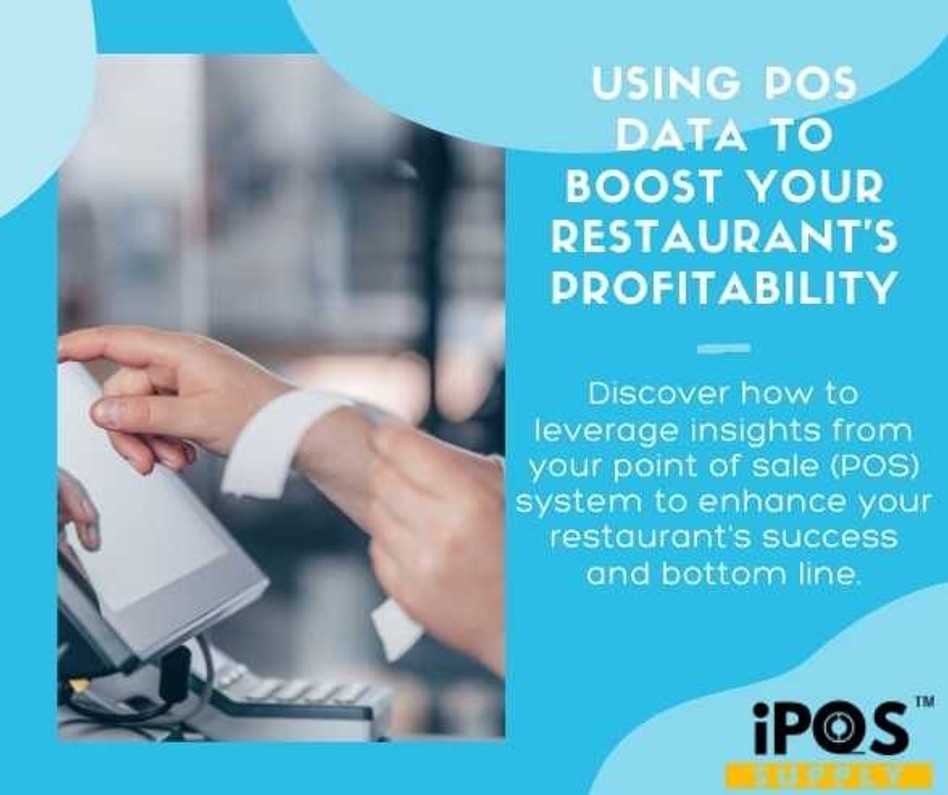How to Use POS Data to Improve Your Restaurant's Bottom Line: Leveraging Insights for Enhanced Success
In today's fast-paced and competitive restaurant industry, success hinges on making informed decisions that drive profitability and customer satisfaction. Fortunately, modern Point of Sale (POS) systems go beyond mere transaction processing; they provide invaluable data that savvy restaurant owners can leverage to optimize operations and increase the bottom line. In this comprehensive guide, we will explore how restaurant owners can effectively use POS data to track sales, manage inventory, analyze customer spending patterns, and make strategic decisions related to pricing, marketing, and staffing.
Q: What kind of data does a POS system capture for a restaurant?
A: A robust POS system captures a wide range of data that goes beyond basic sales figures. Some essential data points include:
1. Sales Data: Detailed transaction records, including order types, timestamps, and payment methods.
2. Inventory Data: Real-time tracking of stock levels, ingredient usage, and depletion rates.
3. Customer Data: Insights into customer behavior, preferences, and spending patterns.
4. Staff Performance Data: Performance metrics like order accuracy, efficiency, and sales performance.
Q: How can restaurant owners use sales data from their POS system?
1. Identifying High-Performing Items: Analyzing sales data helps identify the most popular and profitable menu items, allowing owners to focus on promoting and refining these dishes.
2. Understanding Peak Hours: Spotting trends in sales data reveals peak hours and days, enabling efficient staffing and inventory management to meet demand effectively.
3. Tracking Promotions: Monitoring sales during promotional periods helps evaluate the success of marketing efforts and identify the most effective campaigns.
Q: How does POS data help manage inventory efficiently?
1. Preventing Stockouts: Real-time inventory tracking ensures that popular items are never out of stock, reducing missed sales opportunities.
2. Reducing Waste: Data on ingredient usage helps optimize inventory levels, minimizing waste and lowering operational costs.
3. Supplier Performance Evaluation: By analyzing data on delivery times and product quality, restaurant owners can choose the best suppliers, enhancing overall efficiency.
Q: Can POS data help improve customer satisfaction and spending?
A: Absolutely! POS data offers valuable insights into customer behavior, enabling restaurants to:
1. Personalize Experiences: Understanding customer preferences allows for tailored recommendations and personalized promotions, enhancing customer loyalty.
2. Upselling Opportunities: Identifying complementary items based on customer spending patterns helps increase average check sizes.
3. Resolving Complaints: Access to customer feedback through the POS system empowers owners to address issues promptly, ensuring a positive dining experience.
Q: How can POS data influence pricing strategies?
A: 1. Competitive Pricing: Analyzing market trends and competitor pricing through POS data helps set competitive yet profitable menu prices.
2. Dynamic Pricing: Restaurants can use real-time data to adjust prices during peak hours or slow periods, maximizing revenue without alienating customers.
Q: How does POS data aid in making informed marketing decisions?
A: 1. Targeted Marketing Campaigns: Understanding customer demographics and preferences allows for targeted promotions that resonate with the intended audience.
2. Assessing Marketing ROI: By correlating marketing efforts with sales data, restaurant owners can gauge the effectiveness of various marketing campaigns.
Q: How does POS data contribute to optimizing staffing levels?
A: 1. Peak Hour Staffing: Utilizing sales data to identify busy hours helps determine the optimal number of staff required for efficient service.
2. Employee Performance: Evaluating staff performance metrics from the POS system enables recognizing high-performing employees and providing additional training where needed.
Conclusion:
Leveraging POS data is no longer an option but a necessity for restaurant owners seeking sustained success in an ever-evolving industry. By tracking sales, managing inventory, understanding customer spending habits, and making informed decisions about pricing, marketing, and staffing, restaurant owners can optimize their operations, increase profitability, and deliver exceptional dining experiences. Embrace the power of POS data today, and position your restaurant for a prosperous future.
Recent Posts
-
The Secret Weapon for Local Businesses: Unlock a Flood of Google Reviews with the Tap, Scan, & Review Stand
In today's digital age, online reviews are the lifeblood of any local business. Positive reviews bui …6th Apr 2024 -
Boost Your Real Estate Business with NFC Tap Cards for More Reviews
Real estate reviews are essential for building trust with potential clients and ranking higher in se …6th Apr 2024 -
NFC detection area for Samsung phones
Samsung Galaxy Z Fold4 5G Samsung Galaxy Z Fold3 5G Samsung Galaxy Z Fold2 5G Samsung Gal …14th Nov 2023




